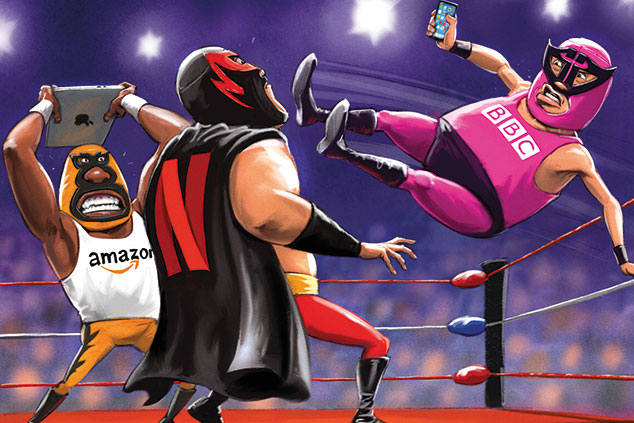
Netflix has successfully disrupted the market with its film and TV streaming service. Can rivals such as Disney and Amazon catch up? Tim Dams assesses the state of the sector.
In 1997, Netflix was established as a mail-order film and television show delivery service. Slightly more than two decades later, it has become a technology giant spearheading a dramatic shift in the television industry. As internet speeds gradually improved, Netflix began to offer a streaming service, delivering programmes to televisions or home computers through the internet, in return for a monthly subscription. It soon caught on, not least because viewers could “binge-watch” entire television series’ and were not bound by the package and channels offered by a cable or satellite television provider.
Today, having changed the way we consume television, Netflix has amassed 137 million subscribers worldwide. It offers an extensive line-up of acquired films, dramas and documentaries as well as its own original programmes, or “content” – big hits include The Crown, Stranger Things and Bird Box – via broadband for a cheap monthly fee (starting at $7.99 in the US, £5.99 in the UK).
In the US market in particular, consumers in their droves have ‘cut the cord’ from expensive cable or satellite TV packages, which can cost over $100 a month, in favour of cheaper streaming services such as Netflix. Around 55% of households in the US now subscribe to a streaming service, paying for two services on average, with Netflix, Amazon and Hulu the market leaders. By comparison, US pay-TV penetration stands at 80% and is falling. Some think an important milestone could be passed in 2019: the number of US homes with streaming services could eclipse those subscribing to pay-TV services.
Prospects of a global showdown
Investors, however, have long factored all this in, and have begun to worry about the future. Having started 2018 as one of the market’s top performers, notching up successive record highs, Netflix has suffered a sharp reversal of fortune in the past six months. Like other FAANG companies – Facebook, Amazon, Apple, Netflix and Google-parent Alphabet – Netflix shares are deep in a bear market. Its share price has tumbled by more than a third from its peak in July. Since then, the prospect of a global slowdown has prompted investors to reassess the growth outlook and the valuations of America’s biggest tech names.
Specific problems have also beset Netflix, notably concerns about its rising expenditure on content, fears about slowing subscriber growth and the prospect of increased competition from rival streaming services. Netflix looks to have a fight on its hands in 2019. The streaming TV landscape, which it dominates, is about to enter a much more mature, competitive phase.
Netflix has a fight on its hands
Rival FAANG firms are wading into Netflix territory. Apple is preparing its own streaming service for launch this year, having spent $1bn on new content in 2018. Google’s YouTube Premium has more than 20 forthcoming original shows in the pipeline, while Facebook is commissioning more for its Facebook Watch video service. Amazon continues to invest heavily in new programming for its loss-leading Amazon Prime Video service.
US media giants Disney and AT&T, meanwhile, have fully woken up to the threat posed to their business models by Netflix. Between them, they have spent more than $150bn on huge acquisitions to bolster their arsenals of content; Disney has acquired 21st Century Fox while AT&T has bought Time Warner. Both firms plan to launch their own streaming services later this year. The new Disney+ service, for instance, is likely to carry blockbuster franchises such as Star Wars and Marvel films. AT&T now has the largest library in Hollywood thanks to its Time Warner acquisition, which came with hit shows such as Friends, Game of Thrones and films including Fantastic Beasts.
In Britain, traditional TV players BBC, ITV and Channel 4 are exploring the idea of forming an alliance to fend off Netflix, which had 9.78 million UK subscribers at the end of 2018, according to the consultancy Ampere Analysis. That puts it ahead of Sky, with an estimated 9.6 million households, while Sky’s Now TV streaming service is thought to have about 1.5 million subscribers.
The UK media regulator Ofcom, alarmed at the growing dominance of the UK television market by foreign firms, is actively encouraging British broadcasters to team up on a joint streaming service – ten years after such a proposal was blocked by the Competition Commission.